In Ulysses, you can quickly create a table in the editor, and fill it with data. You can rearrange rows and columns, add headers, and even set column alignment and sizing. And you can of course export the table afterwards.
How Do I Create a Table?
There are a few things you should be aware of:
- First, ensure the Markdown XL markup is selected when writing in the iCloud or On My Mac section or editing Ulysses files in an external folder.
- If you are using a custom markup, assign the tag (tbl) to tables in Ulysses' Preferences › Markup › your custom markup.
- Tables are not available in the other built-in markups (Markdown, Minimark, Textile’d).
- However, you can use the (tbl) tag to add tables to Markdown files in the External Folders section.
On Mac
To insert a table, you have three options:
- Add the markup tag for tables by typing (tbl).
- Go to Markup in the menu bar and select Table.
- Open the markup panel with the shortcut ⌘9 (command-9) and select the tag “(tbl) Table.”
Once you have added the (tbl) tag, Ulysses will automatically insert a default table with three columns, four rows, and filler text.
By clicking on “3 x 4”, you access the table’s options.
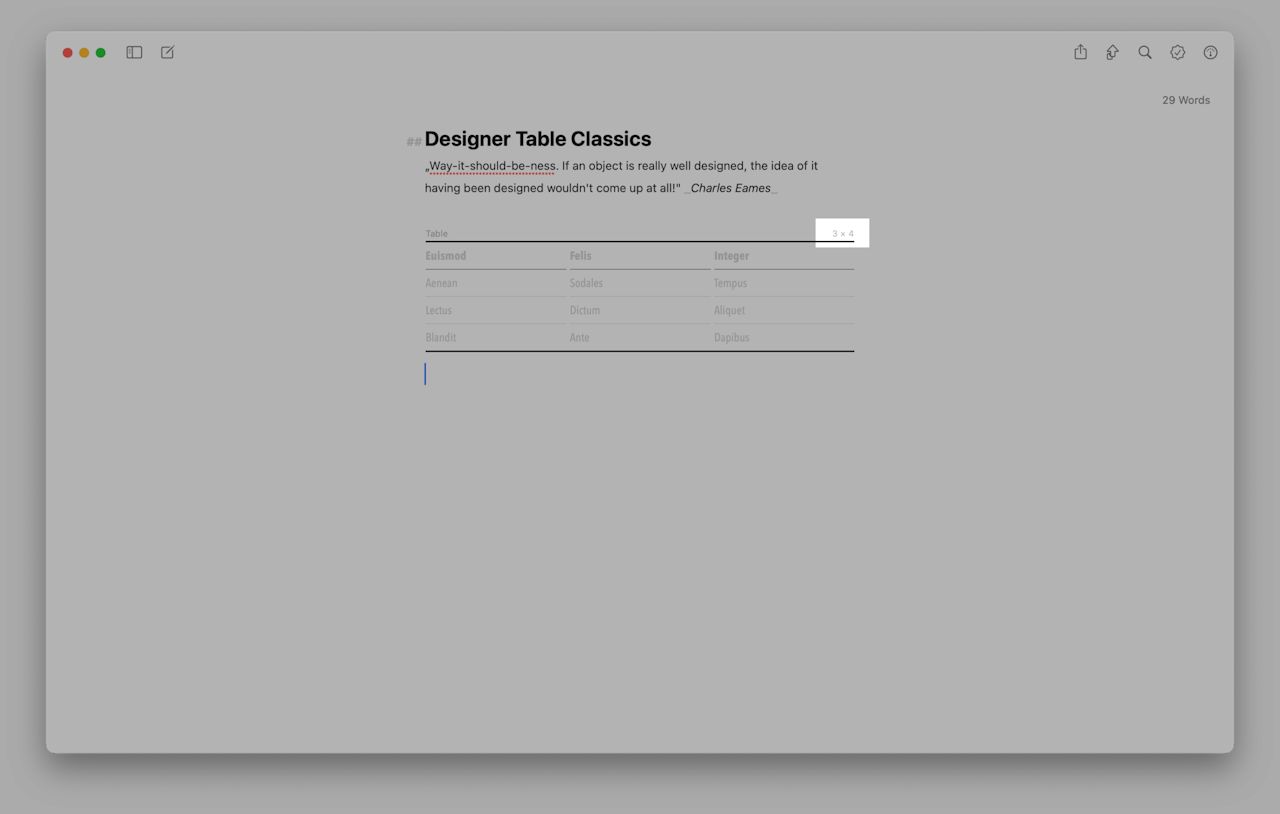
Here you can set the numbers of columns and rows. You can also give the table a caption.
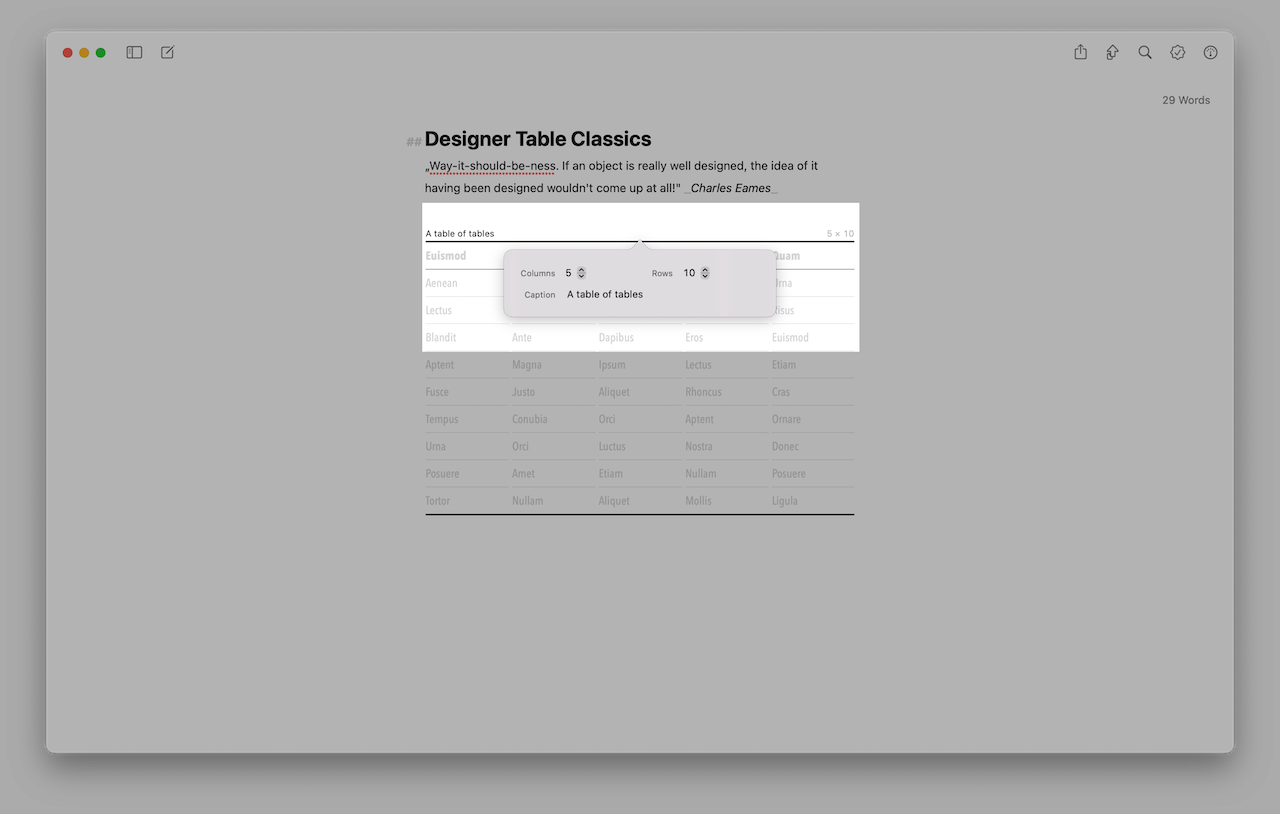
As filler text is not exported, all cells containing lorem ipsum appear empty after export.
On iPad/iPhone
You have two options to insert a table:
- Add the markup tag for tables by typing
(tbl). - Tap the image icon above the keyboard and select Table.
Once you have added the (tbl) tag, a context menu will open. This menu allows you to set the number of rows and columns.
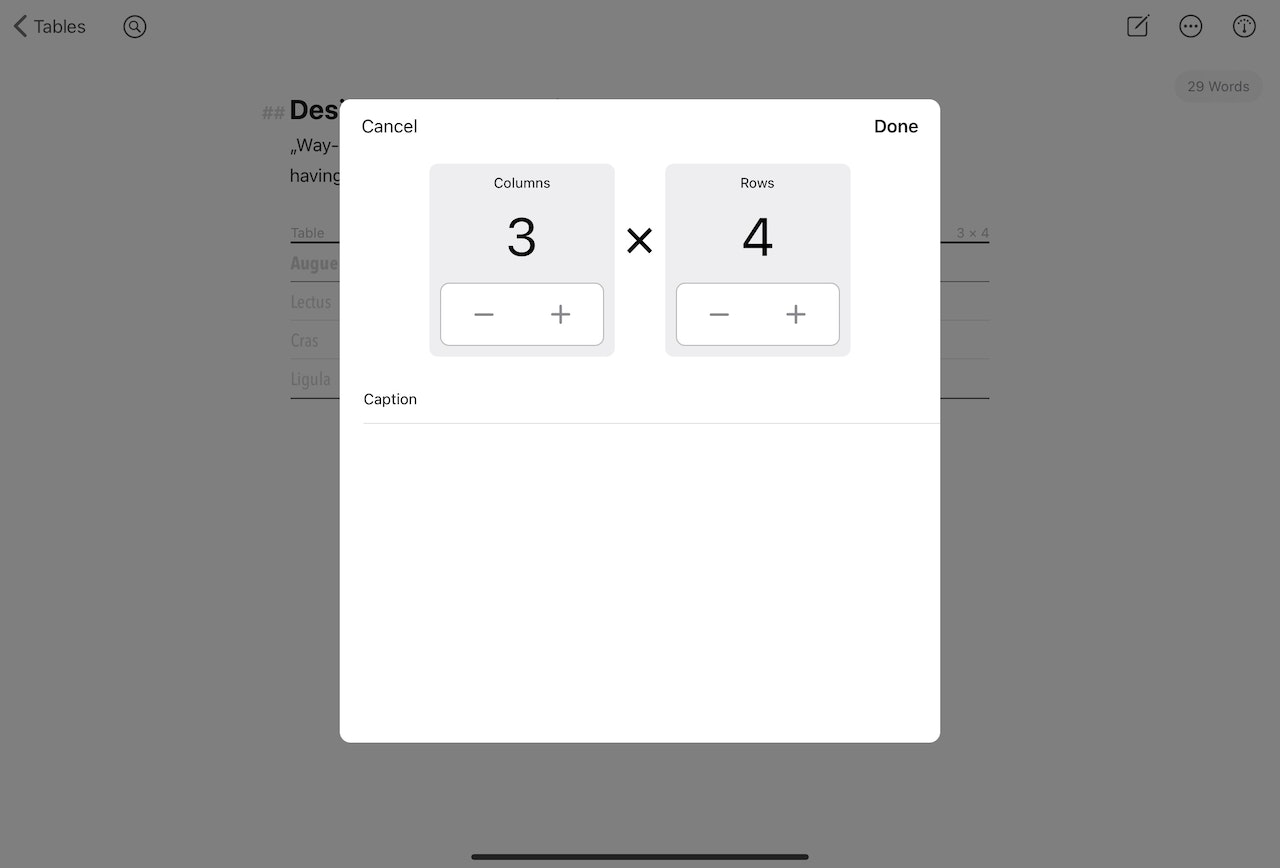
You can also give the table a caption.
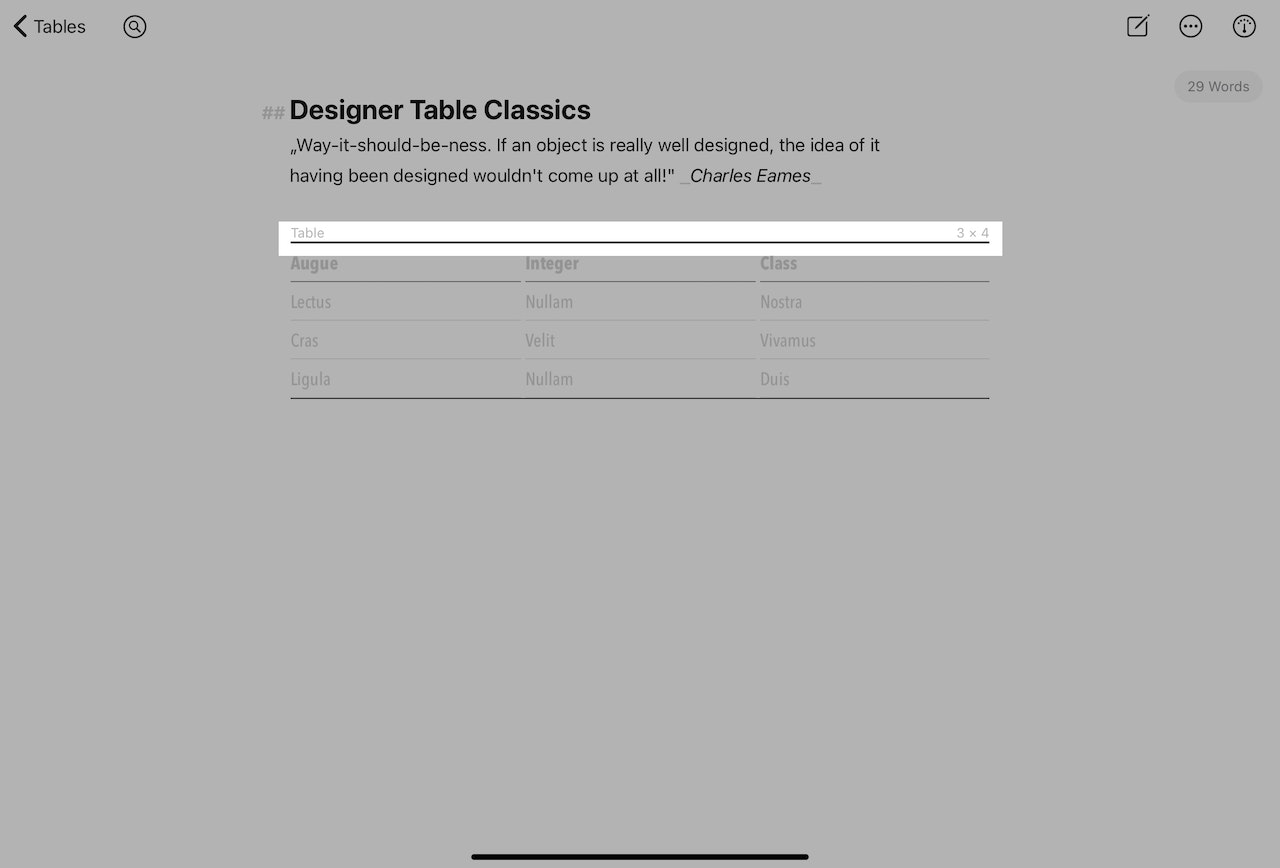
Tap Done, and Ulysses will insert a table with filler text.
As filler text is not exported, all cells containing lorem ipsum appear empty after export.
You can open the table's context menu anytime by tapping the table's very first line.
How to Insert, Move, and Delete Rows
On Mac
Select a row by clicking on a cell and then dragging the mouse pointer beyond the edge of the cell. If you now right-click on the row, a context menu opens, and you can select the corresponding action, e.g., Insert Row.
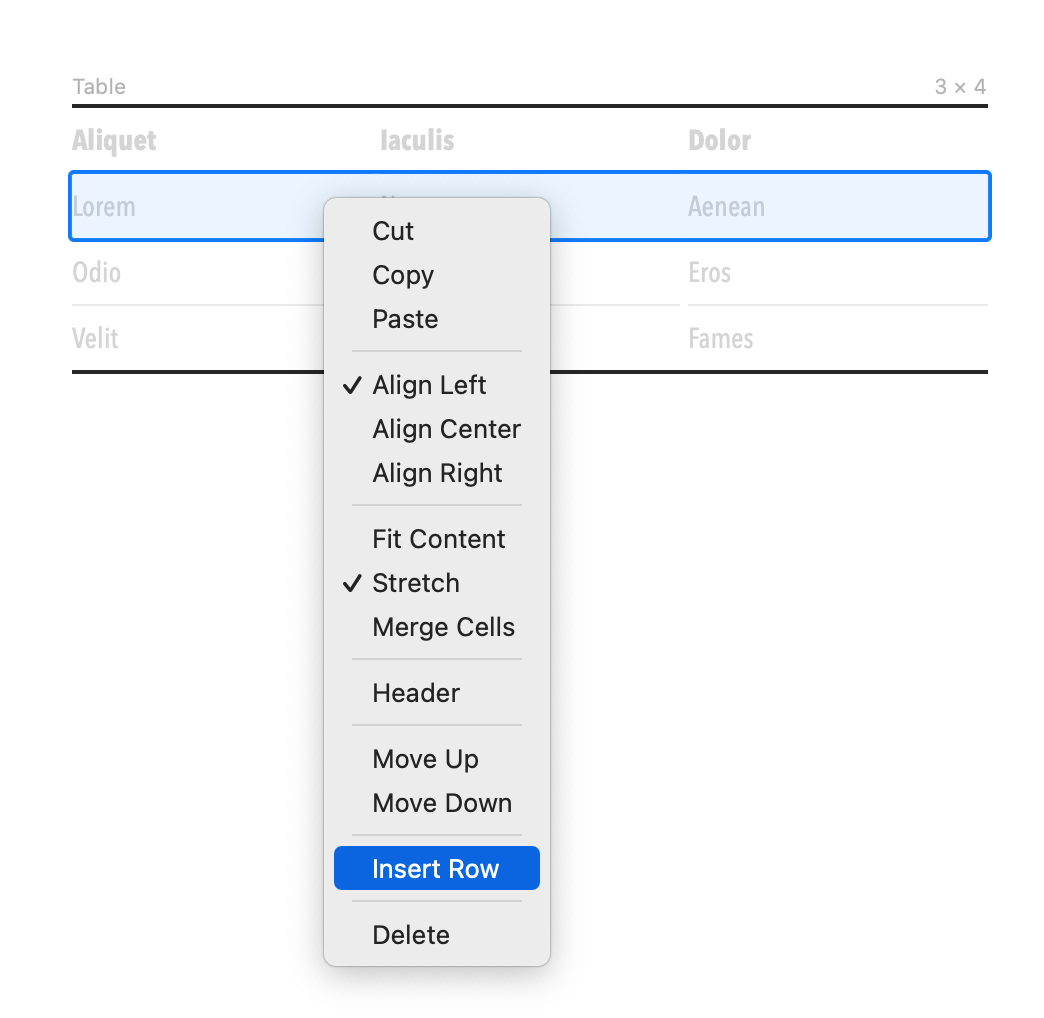
There are also options to style the row's content. You can, for example, change the text alignment or stretch/adjust the content.
All style changes to a row's content will also affect the selected columns.
On iPad/iPhone
Double-tap a cell and choose Select from the pop-up menu to add, delete, or move rows up/down. Then use the selection box to select the row. Now, you have different actions to choose from.
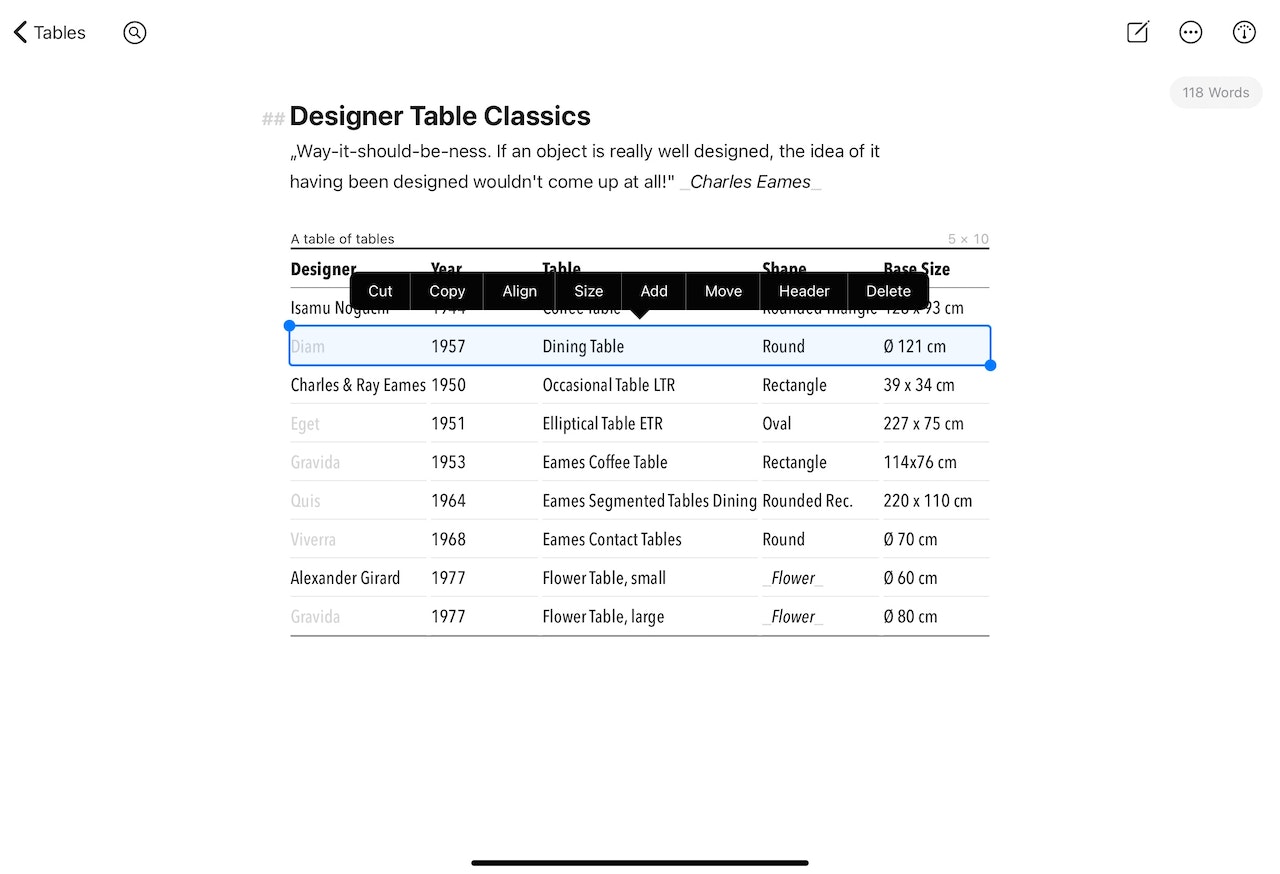
On iPhone, you have to tap the arrow in the context menu to see all actions. However, the arrow will only appear if the entire row is selected.
Alternatively, you can add or delete rows via the settings. To open the settings, simply tap the table's first line.
How to Insert, Move, and Delete Columns
On Mac
Select the column by clicking on a cell and then dragging the mouse pointer beyond the edge of the cell. If you now right-click on the column, the context menu opens. Here, you can insert or delete a column or move the selected column to the left/right.
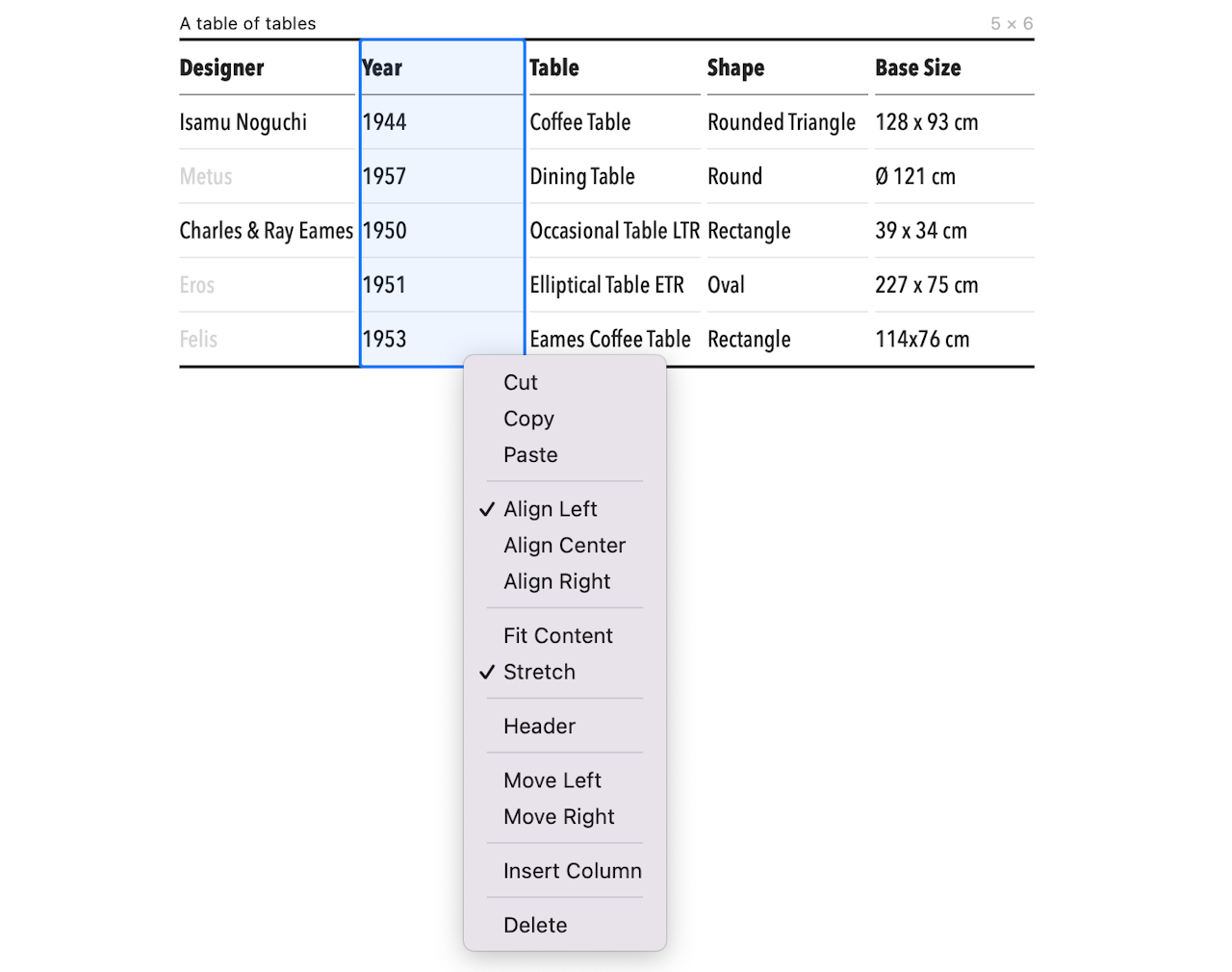
Additionally, there are options to style the content of your column, i.e., change the text alignment or stretch/fit the content.
All style changes of a column's content will affect the whole column, regardless of how many rows in a column are selected.
On iPad/iPhone
To add, delete, or move columns left/right, double-tap a cell and choose Select from the pop-up menu.
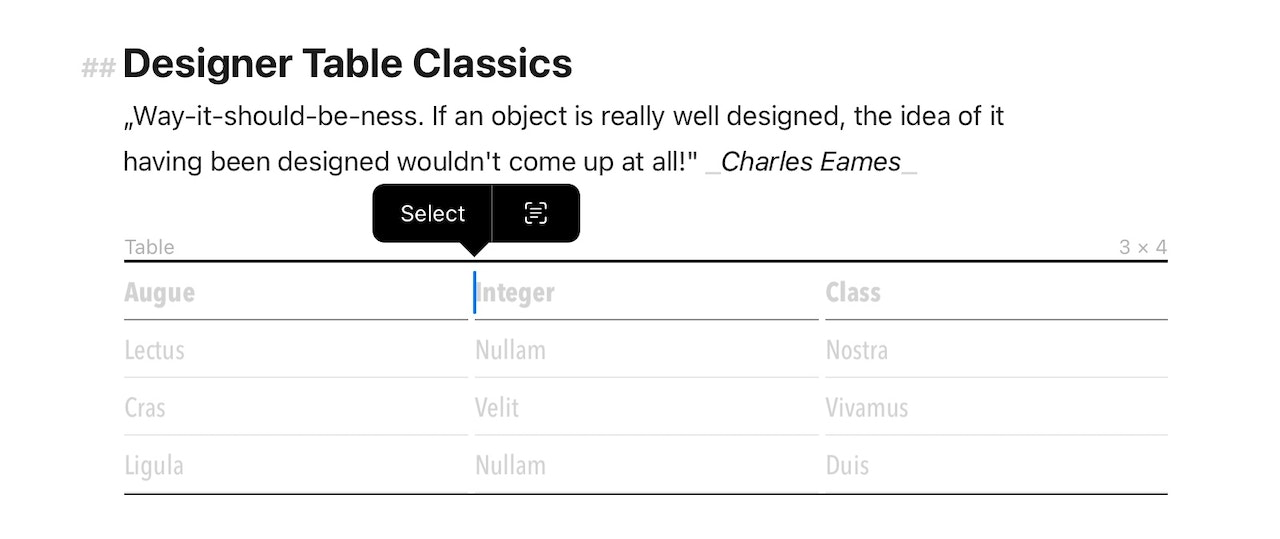
Then use the selection box to select the column. Now you can choose the desired action.
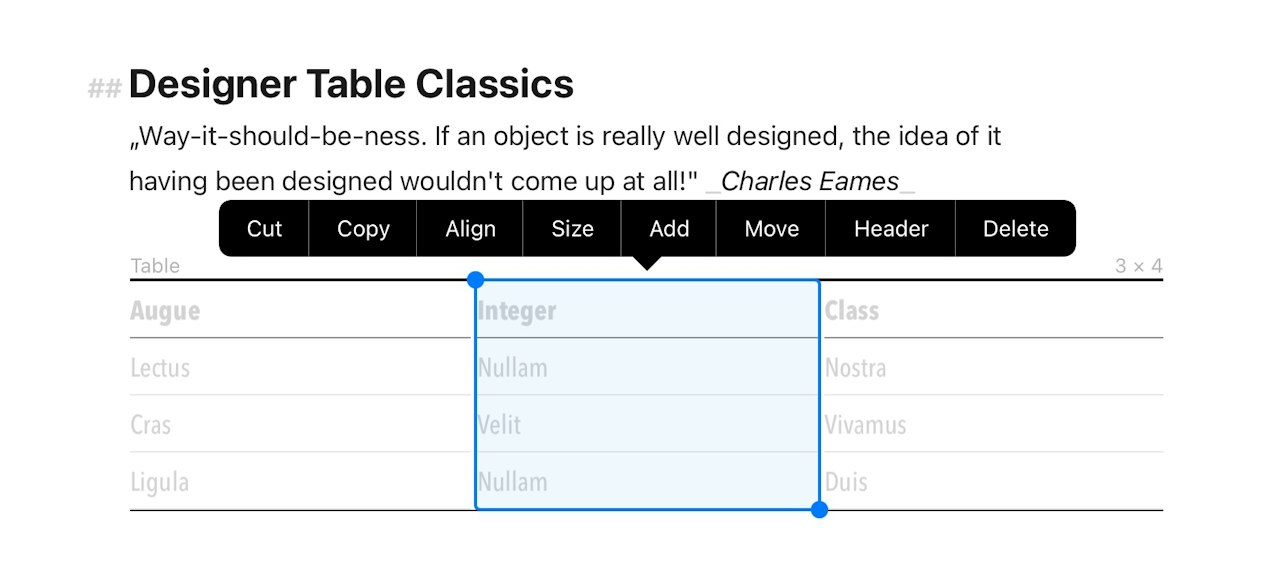
On iPhone, you have to tap the arrow in the context menu to see all actions. However, the arrow will only appear if the entire column is selected.
Alternatively, you can add or delete columns via the settings. To open the settings, simply tap the table's first line.
Import a Table
It is possible to import tables from HTML, Markdown, and DOCX. You can also copy and paste tables from Pages, Word or Excel. However, RTF is currently not supported.
Export a Table
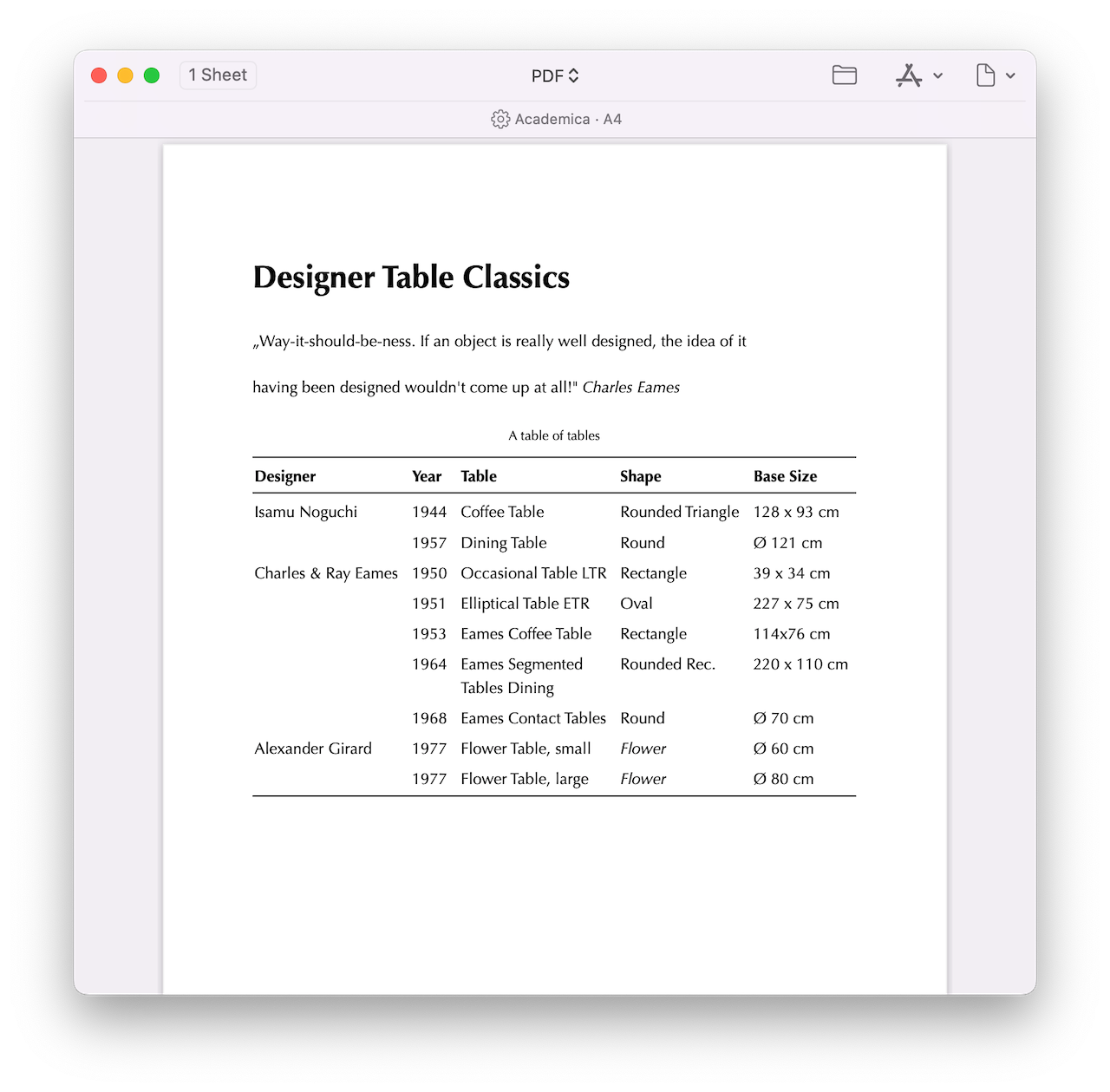
Tables can be exported in almost all formats. However, RTF is currently not supported. We have adapted our built-in export styles for HTML, ePub, and PDF/DOCX.
On Mac, you can customize the appearance of tables in your export document. For all table styling options in Ulysses, see our Styles & Themes Reference.